by Harry Hovel, Ph.D.
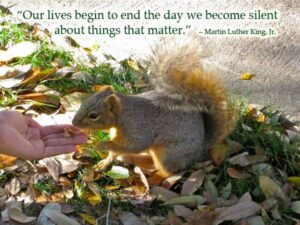 There are dozens of outstanding descriptions on websites from many organizations about wildlife killing contests. This article will summarize the important points made in these websites, but will also include information not seen elsewhere.
There are dozens of outstanding descriptions on websites from many organizations about wildlife killing contests. This article will summarize the important points made in these websites, but will also include information not seen elsewhere.
Recently, a National Coalition to End Wildlife Killing Contests was formed with many member groups [1]. The effort to end these barbaric killing events is growing stronger and more widespread. A documentary film has recently been released (Feb. 16, 2021) outlining the horror, damage, and cruelty of these contests [2].
Wildlife killing contests are privately-sponsored but government-sanctioned mass destruction of wildlife species in the name of fun, prizes, bragging rights, and “family bonding.” In these contests, which take place in nearly every state in the nation, participants compete to see who can kill the most, the biggest, and sometimes the smallest target animal. The contests are often carried out as fundraisers, and always involve a party-like atmosphere once the killing is over, with door prizes, raffles, dinners, and family get-togethers. Children as young as five are invited to join in the contests as long as accompanied by an adult [3]. Thousands of dollars are awarded as cash prizes, though in some cases, prizes include hunting equipment and high-powered rifles like the Bushmaster AR-15 [4, 5].
It’s important for the sponsors of these events to minimize knowledge of their existence by the general public (while simultaneously advertising them to the hunting community), believing rightly that most people would be horrified if they knew of such contests to kill almost unlimited numbers of squirrels, rabbits, birds, and predators like coyotes, wolves, and foxes. Very rarely, contests have been cancelled due to public outcry, but the sponsors vow to bring them back “once the furor has died down.”

 The advertisements about these killing contests are available if one knows where to look, but won’t be found on the front covers of most newspapers. They are usually available on hunting and sportsmen’s clubs websites and magazines, and are easily found by internet searches.
The advertisements about these killing contests are available if one knows where to look, but won’t be found on the front covers of most newspapers. They are usually available on hunting and sportsmen’s clubs websites and magazines, and are easily found by internet searches.
A variety of species are targeted in these contests historically and currently in the US, including coyotes, foxes, bobcats, wolves, woodchucks, marmots, prairie dogs, rabbits, squirrels, raccoons, crows, pigeons, rattlesnakes, sharks, cownose rays, pythons, boar, and occasionally bears and mountain lions [6-9]. Predators like foxes and coyotes are the most targeted. Killing contests add to the already almost year-around hunting seasons on these ecologically-valuable predators. Squirrels are another of the favorite target species.

 It is estimated that around 600 of these contests take place yearly around the country [10], though the number may have decreased slightly in recent years because several states have outlawed them lately. Pennsylvania has the most contests [11], nearly 50, with New York coming in second with at least 29 [6]. The states where they have been outlawed either by legislation or regulation include Arizona, California, Colorado, Massachusetts, New Mexico, Vermont, and Washington. Legislative efforts are pending in New York, New Jersey, Maryland, New Hampshire, and Oregon. In some cases contests have been cancelled due to public pressure; in others they were outlawed as a form of illegal gambling (betting on the winning participants and the number of kills, raffles, prizes) [12, 13].
It is estimated that around 600 of these contests take place yearly around the country [10], though the number may have decreased slightly in recent years because several states have outlawed them lately. Pennsylvania has the most contests [11], nearly 50, with New York coming in second with at least 29 [6]. The states where they have been outlawed either by legislation or regulation include Arizona, California, Colorado, Massachusetts, New Mexico, Vermont, and Washington. Legislative efforts are pending in New York, New Jersey, Maryland, New Hampshire, and Oregon. In some cases contests have been cancelled due to public pressure; in others they were outlawed as a form of illegal gambling (betting on the winning participants and the number of kills, raffles, prizes) [12, 13].
There are some indications of “collateral damage” resulting from the contests [14], both from pets that resemble the target animals and “endangered species that get in the way.” Even wolves, protected as endangered in some locations but targets of contests in others, have been deliberately or unintentionally “harvested” as the hunting terminology goes.
The diagram pictured below show locations where contests are routinely held in the United States. Estimates are that 320,000 coyotes alone are killed in wildlife killing contests each year [14]. Another 80,000 are killed by the federal government’s Wildlife Services.
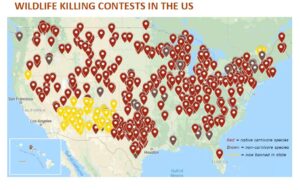 Psychologists have speculated as to why much hatred [4, 15, 16] exists against predators like wolves and coyotes, suggesting that it may be ingrained in the human psyche from ancient times when humanoids were possibly prey of wolves and other large predators. Humans were never the prey of coyotes but since they look nearly identical to wolves except for size, they may be lumped in the same category. Bears, also a large predator, possibly of humans in ancient times, don’t receive the same hatred, possibly because of Smokey and Teddy. In any case, none of these predators attack humans in modern times except for exceedingly rare cases where people may stumble upon them and they are protecting their territory (as in mother bears protecting cubs). The number of wolf attacks on humans, Little Red Riding Hood notwithstanding, is in the single digits; “in North America, there have been six documented unprovoked attacks causing injury, and 21 believed to be related to wolves which had been fed by humans, in over a century” [17]. In the same period, we have nearly driven wolves extinct, in spite of environmental studies showing how highly valuable they are in nature [18, 19].
Psychologists have speculated as to why much hatred [4, 15, 16] exists against predators like wolves and coyotes, suggesting that it may be ingrained in the human psyche from ancient times when humanoids were possibly prey of wolves and other large predators. Humans were never the prey of coyotes but since they look nearly identical to wolves except for size, they may be lumped in the same category. Bears, also a large predator, possibly of humans in ancient times, don’t receive the same hatred, possibly because of Smokey and Teddy. In any case, none of these predators attack humans in modern times except for exceedingly rare cases where people may stumble upon them and they are protecting their territory (as in mother bears protecting cubs). The number of wolf attacks on humans, Little Red Riding Hood notwithstanding, is in the single digits; “in North America, there have been six documented unprovoked attacks causing injury, and 21 believed to be related to wolves which had been fed by humans, in over a century” [17]. In the same period, we have nearly driven wolves extinct, in spite of environmental studies showing how highly valuable they are in nature [18, 19].
In this same time period, hundreds of human fatalities came from dog attacks, 30-35 per year, but these are invariably dogs from species trained for dog fighting or highly aggressive applications (guard dogs, crowd control, military). We love dogs, and rightly so, but hate wolves and coyotes that do nothing to us, innocently going about their lives. Go figure!
The diagram and list below show wildlife killing contests in New York state [6], overwhelmingly coyote and fox, with a few squirrel, rabbit, raccoon, and woodchuck added in.
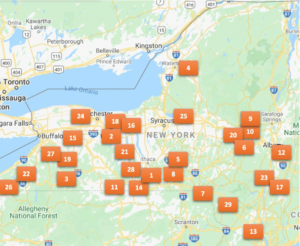
- Danby Pirates Club Annual Coyote Hunt – Spencer (coyote, fox)
- New York State Predator Hunt -East Bloomfield (coyote)
- Cuba Rod & Gun Club Squirrel Slam – Cuba
- Northern New York Hound Club’s Annual Coyote Hunt -Carthage
- Annual Solon Sportsmen’s Club Coyote Hunt – Cincinnatus
- Coyote Hunt – Canajoharie
- Annual Coyote Hunting Tournament – Hancock
- Whitney Point Coon Hunters Annual Coyote Contest – Whitney Point
- Smoke-N-Yote’s Early Season Yote Hunt – Fultonville (Coyote)
- Coyote Hunt – Fultonville
- One Wiley Weekend: Dobbers vs.Callers Shootout – Addison (coyote)
- Hunter Fuz’s Predator Pool Annual Predator Harvest Contest – Wynantskill (bobcat, coyote, fox)
- Independent Fur Harvesters of CNY’s Bob Evan’s Memorial Predator Hunt – Monroe (Coyote, Fox)
- Last Call Coyote Hunt – Van Etten
- End of the Road Inn Coyote Contest – Pavilion
- New York State Predator Hunt – Macedon (coyote, fox)
- Crow Down – Palenville (crow)
- “Final Fling” for Fox: A Fox Calling Contest– Macedon
- The Fox Bowl – Arcade (Coyote, Fox)
- Rabbit Hunt – Canajoharie
- Annual Cal Dewitt Memorial Rabbit Hunt – Penn Yan
- Big Coon Contest – Sinclairville (raccoon)
- Sqwirl Skramble – Palenville (squirrel)
- Hazzard County Squirrel Slam – Brockport
- Squirrel Derby -Verona Beach
- Fat Chuck Two-Man Team Hunt – Clymer (Woodchuck)
- D&H Transport/ Savage Arms Woodchuck Derby – Chaffee
- Rabbit Hunt – Montour Falls
- Federation of Sportsmen’s Clubs of Sullivan County Annual Federation 3 Day Coyote Contest -White Sulphur Springs
Arguments made by proponents of Wildlife Killing Contests.
Proponents of wildlife killing contests (WKCs) make several arguments to justify their position.
Argument #1). WKCs are important for wildlife management and are supported by state wildlife agencies.
State wildlife departments have stated that WKCs serve no significant management purpose; they don’t control populations of the targeted species, don’t result in excess predation of deer, and don’t protect livestock [4, 20-22]. “While participants try to rationalize the killing by claiming that they are keeping coyote populations in check, scientists and even state wildlife agencies have stated time and again that the contests provide no credible wildlife management service” [20].
“Awarding prizes for wildlife killing contests is both unethical and inconsistent with our current understanding of natural systems,” declares Michael Sutton, former president of the California Fish and Game Commission. “Such contests are an anachronism and have no place in modern wildlife management” [4]. Criticisms are sometimes made that science is not used to guide wildlife management [23], which instead may make decisions based on political and financial factors. Wildlife agencies often take a hands-off approach to wildlife killing contests [4, 24] or sometimes even support them [7]. These departments are often substantially funded by hunting and trapping revenues.
Argument #2). WKCs help control coyote and other predator populations.
In fact, taking out large numbers of coyotes from an area has detrimental consequences; the individuals killed and removed are behaving naturally as intended within their environment, maintaining the balance of predator and prey, while others often less in tune with their nature move in to fill the void and can bring in undesirable behavior. “For the animals killed in “contests” such as these, there is no selection process, and it doesn’t discriminate. Often, the ones that are taken are healthy and productive members of the ecosystem. There is no evidence that these coyotes have been harming human interests or behaving in any way unnaturally. Most are simply going about their lives, raising pups, hunting natural food sources, and keeping to themselves” [3].
According to Nebraska Wildlife Rehab, a non-profit organization of wildlife rehabilitators, “People often try to rationalize the killing of coyotes. They say that there is an overpopulation of coyotes, which is not the case. They say that killing coyotes like this contributes to population control, whereas scientific studies do not bear this out. In fact, it appears that aggressive lethal management may increase populations of coyotes in the short-term, and that when left alone, coyote populations will naturally stabilize. (Research suggests that when aggressively controlled, coyotes can increase their reproductive rate by breeding at an earlier age and having larger litters, with a higher survival rate among young. This allows coyote populations to quickly bounce back, even when as much as 70 percent of their numbers are removed)” [3].
This resiliency of nature, to increase birth rates when a population decrease takes place, seems to be commonplace. The same phenomenon happens with deer, rabbits, birds, in fact most if not all wildlife species [25]. Populations are ultimately determined by the available habitat and its carrying capacity (food, water, shelter). This principle only fails when catastrophic events, including over-hunting and poaching, drive a species to extinction.
Argument #3). Wildlife killing contests help to prevent livestock losses and livestock attacks.
According to wildlife biologist Carter Niemeyer, whose job was once to shoot coyotes from helicopters for the USDA’s Wildlife Services, reducing the natural coyote population in the name of saving livestock can have the opposite effect. “One story I told them is the time in Montana we sent in a helicopter and randomly shot a bunch of coyotes. The rancher called me a couple days later and said: ‘Carter, do coyotes revenge kill? We haven’t had trouble with coyotes all winter. We saw your helicopter the other morning and heard lots of shooting. Now we’ve got coyotes killing sheep. What the hell’s going on?” [4].
“Wildlife killing contest participants exploit misunderstanding and fear surrounding species like coyotes and may claim that by killing them in contests, they are helping to protect livestock or increase numbers of game species like deer and turkeys. But such pronouncements are not borne out by scientific research, and are being debunked by a growing number of wildlife management agencies and professionals” [26]. “Randomly killing species like coyotes does not prevent conflicts with livestock or pets, and may even increase them by disrupting the delicate ecological balance” [22].
Wildlife killing contests actually have the reverse effect and may increase attacks on livestock. “Mass killings of carnivores result in the elimination of resident adults, which would otherwise act as a curb to prevent young inexperienced, transient carnivores from causing depredation” [16]. This principle likely applies to other carnivores such as wolves, mountain lions, and bears, as well as coyotes. Left alone, the diets of coyotes, foxes, and wolves consist of small forest mammals, not livestock [4, 16].
Argument #4). Coyotes reduce the number of deer available for hunters.
Deer populations are not significantly influenced by coyote depredation [21, 26]. “Varmint killers counter that they perform valuable public service, wrongly arguing that these contests help prevent coyotes from taking livestock and deer” [4]. Deer are not a normal prey of coyotes, but as in the case of livestock, wildlife killing contests may cause them to switch from forest prey to deer [16]. Like all wildlife, deer populations are controlled by carrying capacity: the available habitat and food supply, and by natural death rates [25]. However, they are also artificially controlled by a state wildlife department’s “buck laws” which restricts hunters from shooting females most of the year, ensuring an increased crop of fawns the following year [27, 28], increasing the overall deer population, in spite of the known increased number of deer/car collisions that comes from increased populations.
And these arguments made above are only made for predator contests. They could hardly justify squirrel, rabbit, or pigeon WKCs. As far as anyone knows, no pack of rabbits, squirrels, crows, foxes, or woodchucks has attacked either deer or livestock. None of these erroneous excuses justifies killing contests for all these other target species, even if they did for coyotes.
The bottom line is that none of the excuses that sponsors make trying to justify these killing contests are valid, but they keep touting them anyway because they can hardly let the public know that the killings are carried out for fun, prizes, and good family get-togethers.
Ethical hunters, those that respect the animals they hunt even though they kill them, are disgusted with wildlife killing contests, and express concern that the contests give hunting a bad name and possibly sour the public away from hunting [4, 12, 22, 26, 29]. It is said in legal and environmental circles that wildlife is managed in the public trust; it either belongs to all of us or none of us, depending on a person’s view of the natural world [7, 15, 23]. What right then do small groups of people have to damage and destroy what belongs to all of us?
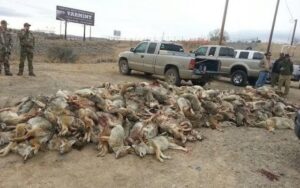 What is even more significant is that killing large numbers of target animals of any species is not only unethical and a waste of living beings but contrary to good ecological principles [14, 26, 29]. All species seem to have a significant role in nature, even if that role isn’t well known to the general public. Coyotes and foxes, for example, are part of nature’s plan to balance predator and prey. Their normal diet is small animals: field mice, rats, rabbits, and the like. Many of these small forest dwellers carry ticks which can be carriers of Hanta virus, Lyme disease, and other tick borne pathogens: ehrlichia, babesia, anaplasma, bartonella, Powassan virus, and Rocky Mt. Spotted Fever, all very serious diseases and all on the increase. Coyotes and foxes keep the populations of the tick carriers down and in balance. As such they provide a real service to human beings. Our response is to torture and kill them.
What is even more significant is that killing large numbers of target animals of any species is not only unethical and a waste of living beings but contrary to good ecological principles [14, 26, 29]. All species seem to have a significant role in nature, even if that role isn’t well known to the general public. Coyotes and foxes, for example, are part of nature’s plan to balance predator and prey. Their normal diet is small animals: field mice, rats, rabbits, and the like. Many of these small forest dwellers carry ticks which can be carriers of Hanta virus, Lyme disease, and other tick borne pathogens: ehrlichia, babesia, anaplasma, bartonella, Powassan virus, and Rocky Mt. Spotted Fever, all very serious diseases and all on the increase. Coyotes and foxes keep the populations of the tick carriers down and in balance. As such they provide a real service to human beings. Our response is to torture and kill them.
If you escaped Lyme disease, bartonnella, or babesiosis last year, or the deadly Powassan virus, thank a coyote and a fox (not that we should blame the small animals either; they had no say in the matter.
Wildlife killing contests attempt to kill the largest number of target animals in the shortest time. To do this, they very often use unethical means such as fake distress calls, lures and baits, even leghold traps. During the contest, participants bring their kills to the headquarters to be weighed and measured, to determine the biggest, the heaviest, and the most. Once this is finished, the animals are of no use and are thrown away in dumpsters, landfills, or for smaller animals like squirrels and rabbits, buried in pits. There is no respect shown to any of the victims. They are simply “trash” after the event is over [8, 10, 30].
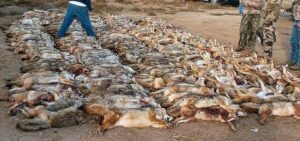 There is no question that wildlife killing contests entail a great deal of cruelty. It has been said that wildlife killing contests place us in a “bizarre universe in which animal cruelty is celebrated and rewarded rather than shunned” [20]. There are invariably animals who are wounded instead of killed outright, that escape to die slowly, lingering in suffering, possibly to develop infections that kill over days, bleeding to death over unknown time periods, or dying from starvation or dehydration [26, 31]. Pregnant target animals lose the babies in the womb when they are killed. Other victims leave young behind in the nest to die of starvation or dehydration when their “parents” fail to reappear. “When mother coyotes are killed they leave orphaned pups to die of starvation or exposure. The deaths cause packs to become disrupted and displaced. Animals who are injured but not killed may suffer slow, painful deaths” [12].
There is no question that wildlife killing contests entail a great deal of cruelty. It has been said that wildlife killing contests place us in a “bizarre universe in which animal cruelty is celebrated and rewarded rather than shunned” [20]. There are invariably animals who are wounded instead of killed outright, that escape to die slowly, lingering in suffering, possibly to develop infections that kill over days, bleeding to death over unknown time periods, or dying from starvation or dehydration [26, 31]. Pregnant target animals lose the babies in the womb when they are killed. Other victims leave young behind in the nest to die of starvation or dehydration when their “parents” fail to reappear. “When mother coyotes are killed they leave orphaned pups to die of starvation or exposure. The deaths cause packs to become disrupted and displaced. Animals who are injured but not killed may suffer slow, painful deaths” [12].
But even more insidious than the unintentional but inevitable cruelties are those people that cause deliberate suffering because of their hatred for their wildlife victims. Christopher Ketcham tells the story [15] about his undercover immersion in the Idaho Coyote and Wolf Derby, describing his conversation with a contestant named Cal Black. “Gut-shoot every goddamn last one of them wolves.” He wished a similar fate on “tree huggers,” who, in Cal’s view, mostly live in New York City. “I want wolves to eat them goddamn tree huggers.”
Ketcham goes on to report that Cal recommended armor-piercing bullets, explaining that gut-shooting with these rounds, rather than aiming for the heart or lungs, has two advantages: First, they’ll pass right through instead of mushrooming; so the animal will suffer, running in panic for a mile or so before it bleeds out. Second, if you’re hunting illegally (as recommended by other contestants), game wardens won’t find a bullet.
This also testifies that illegal as well as “legal” killing can take place in killing contests. State wildlife departments generally have strict rules and regulations about allowable procedures for killing animals. Wildlife killing contests take place out of sight by sometimes large groups of contestants; whether they follow these regulations remains for speculation. At the Idaho event, Ketcham describes advice he received for killing wolves. “At the derby registration the night before the killing was to commence, we were so convincing that the organizers didn’t even bother to ask for our hunting licenses or wolf permits. Instead they suggested spots in the surrounding mountains where we could find wolves to shoot illegally” [15].
Opponents of the killing contests have sometimes received threats including death threats. BBC videographer Martyn Stewart present at the Idaho contest reports contestants stalking him when the locals decided he was opposed to the WKC and assaulting him in his truck as he drove out of town. “He told me that when he left town at 6 AM the next morning, the lights of a pickup truck flared in the winter dark as it pulled out after him. As soon as the speed limit hit 55, the truck raced up behind his bumper, the floodlights on high, the horn blasting,” according to Ketcham, reporting Martynn’s words. “They were blinding me,” Martyn said, “and I gotta admit, my heart was in my mouth. They were literally driving me out of town.” About 15 miles north of Salmon, the truck emitted one final blast, flashed its lights, and gave up its hellish pursuit.
Other examples can also be found of deliberate cruelty to wolves and coyotes. “But if you’re fretting about the cost of bullets, don’t worry! In many western states, it’s completely permissible to chase down coyotes or wolves with your snowmobile or ATV and run them over. The impact might not kill the devil right away, but the broken bones ensure the critter won’t walk away! It’s all a part of the sport!” [16]. There are “stories of those who delight in simply injuring some of these animals, relishing the idea of creating “spinners” — shooting high across the top of the spine of an animal, to see them lose control of the back legs and spin in agony” [32].
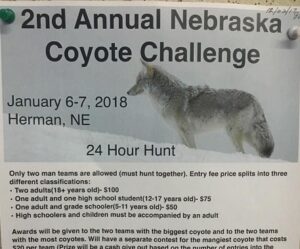 Finally, there is the disturbing question of what these killing contests are doing to children. Most of these contests encourage the participation of children, sometimes by participation in the killing itself, sometimes by joining in the “fun” or helping to dispose of the animals. The Nebraska Coyote Challenge encourages participants as young as five. New York State’s Department of Environmental Conservation encourages as many children as possible to participate in hunting and trapping activities, including in National Wildlife Refuges [33]. Some groups debate the age at which children should be introduced to hunting, with opinions ranging from 5 years of age to 12 [34]. This is very much opposite to the tenets of humane education which society hopes will teach empathy and compassion to young children [31]; instead, efforts by state wildlife agencies attempt the opposite, fostering desensitization and indifference to killing and suffering of animals, in hopes of indoctrinating a new crop of future hunters. Obviously sportsmen’s clubs are in agreement, as are state Farm Bureaus on the erroneous assumption that predators like coyotes endanger livestock. It is ironic in New York State that the NYS Education Law, section 809, mandates humane education for teaching the value of wildlife and their importance in nature while the NYS DEC wants to teach them to kill the same wildlife.
Finally, there is the disturbing question of what these killing contests are doing to children. Most of these contests encourage the participation of children, sometimes by participation in the killing itself, sometimes by joining in the “fun” or helping to dispose of the animals. The Nebraska Coyote Challenge encourages participants as young as five. New York State’s Department of Environmental Conservation encourages as many children as possible to participate in hunting and trapping activities, including in National Wildlife Refuges [33]. Some groups debate the age at which children should be introduced to hunting, with opinions ranging from 5 years of age to 12 [34]. This is very much opposite to the tenets of humane education which society hopes will teach empathy and compassion to young children [31]; instead, efforts by state wildlife agencies attempt the opposite, fostering desensitization and indifference to killing and suffering of animals, in hopes of indoctrinating a new crop of future hunters. Obviously sportsmen’s clubs are in agreement, as are state Farm Bureaus on the erroneous assumption that predators like coyotes endanger livestock. It is ironic in New York State that the NYS Education Law, section 809, mandates humane education for teaching the value of wildlife and their importance in nature while the NYS DEC wants to teach them to kill the same wildlife.
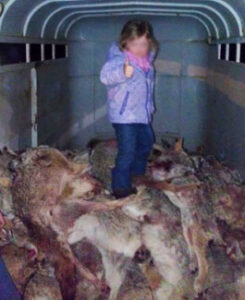
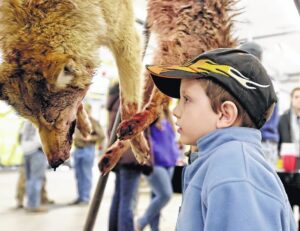 In the Pennsylvania pigeon shooting contests, children as young as 12 were assigned the task of killing the wounded pigeons by either stomping them to death or twisting their necks [24, 36]. In Idaho some years back, the killing contests included the Bunny Bash where children played baseball by hitting rabbits with baseball bats to see who could hit them the farthest. Wildlife agencies encourage children to learn and participate in leghold trapping, a horrendously cruel and barbaric assault of wildlife outlawed in most nations around the world [37]. It’s hard to believe that children encouraged to behave this way would grow up with much compassion or empathy for wildlife or the environment [38].
In the Pennsylvania pigeon shooting contests, children as young as 12 were assigned the task of killing the wounded pigeons by either stomping them to death or twisting their necks [24, 36]. In Idaho some years back, the killing contests included the Bunny Bash where children played baseball by hitting rabbits with baseball bats to see who could hit them the farthest. Wildlife agencies encourage children to learn and participate in leghold trapping, a horrendously cruel and barbaric assault of wildlife outlawed in most nations around the world [37]. It’s hard to believe that children encouraged to behave this way would grow up with much compassion or empathy for wildlife or the environment [38].
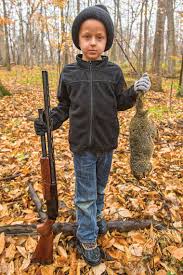
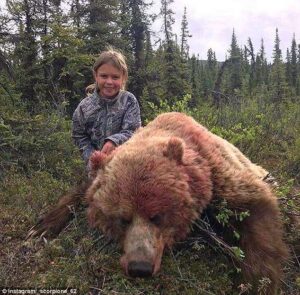 Many studies point out that desensitization to cruelty and killing of animals can have repercussions in human violence [31] (for detailed descriptions of the cruelty/violence link, see “The Connection Between Animal Abuse and Human Violence” located on this website). No one would argue that children who hunt, kill, or torture animals will invariably end up committing human violence; yet it is undeniable from large numbers of studies that most violent individuals have a history of animal cruelty in their background. Logic suggests that children indoctrinated that wildlife is of no value and who participate in their destruction will not be the most benevolent and compassionate in other spheres of their lives. A majority of men who commit domestic violence have a background of animal cruelty as well as a history of family violence during their childhood.
Many studies point out that desensitization to cruelty and killing of animals can have repercussions in human violence [31] (for detailed descriptions of the cruelty/violence link, see “The Connection Between Animal Abuse and Human Violence” located on this website). No one would argue that children who hunt, kill, or torture animals will invariably end up committing human violence; yet it is undeniable from large numbers of studies that most violent individuals have a history of animal cruelty in their background. Logic suggests that children indoctrinated that wildlife is of no value and who participate in their destruction will not be the most benevolent and compassionate in other spheres of their lives. A majority of men who commit domestic violence have a background of animal cruelty as well as a history of family violence during their childhood.
Summary
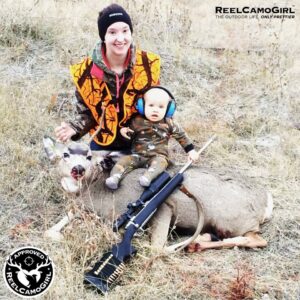
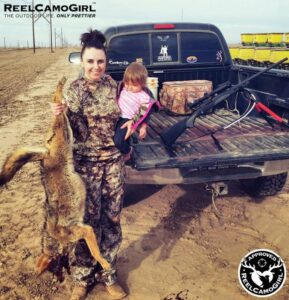 Wildlife killing contests are wantonly cruel events where large numbers of target animals are killed for prizes, for fun, and for bragging rights. They are not environmentally sound, do not prevent attacks on livestock which are rare in general and if anything are often actually caused by predator-killing hunts and contests, do not increase the number of deer for hunters, are not supported by ethical hunters, and are not considered useful in wildlife management. They do not result in any significant population control. They upset the ecological balance between predator and prey and very likely contribute to the transmission of diseases such as Lyme disease and other tick-borne illnesses. Even these arguments attempting to erroneously justify predator killing have no place in squirrel, rabbit, crow, and other target killing contests carried out just in the name of fun. They teach children that killing and cruelty are acceptable and wildlife has no intrinsic value of its own. Whatever one thinks of hunting, wildlife killing contests have no place in an enlightened society.
Wildlife killing contests are wantonly cruel events where large numbers of target animals are killed for prizes, for fun, and for bragging rights. They are not environmentally sound, do not prevent attacks on livestock which are rare in general and if anything are often actually caused by predator-killing hunts and contests, do not increase the number of deer for hunters, are not supported by ethical hunters, and are not considered useful in wildlife management. They do not result in any significant population control. They upset the ecological balance between predator and prey and very likely contribute to the transmission of diseases such as Lyme disease and other tick-borne illnesses. Even these arguments attempting to erroneously justify predator killing have no place in squirrel, rabbit, crow, and other target killing contests carried out just in the name of fun. They teach children that killing and cruelty are acceptable and wildlife has no intrinsic value of its own. Whatever one thinks of hunting, wildlife killing contests have no place in an enlightened society.
[1]. http://www.projectcoyote.org/endkillingcontests
[2]. http://www.projectcoyote.org/media-release-new-film-documents-wildlife-killing-contests/
[4]. https://e360.yale.edu/features/coyote-carnage-the-gruesome-truth-about-wildlife-killing-contests
[5]. https://www.thecanidproject.com/end-killing-contests
[6]. https://digitalcommons.pace.edu/cgi/viewcontent.cgi?article=1322&context=honorscollege_theses
[7]. https://www.sierraclub.org/sierra/thirteen-unlucky-animals-wildlife-killing-contests
[8]. https://aldf.org/case/ending-killing-contests-in-colorado/
[9]. https://aldf.org/case/ending-killing-contests-in-massachusetts/
[12]. https://aldf.org/issue/killing-contests-and-the-law/
[14]. http://www.projectcoyote.org/wp-content/uploads/2016/07/Project-Coyote-Factsheet-WKC.pdf
[15]. https://www.vice.com/en/article/qbee5d/how-to-kill-a-wolf-0000259-v21n3
[16]. https://www.nathab.com/blog/wildlife-killing-contests/
[17]. http://www.wolfmatters.org/myths-and-truths-about-wolves.html
[19]. https://www.yellowstonepark.com/things-to-do/wolf-reintroduction-changes-ecosystem
[23]. https://www.sierraclub.org/sierra/does-science-really-guide-way-we-manage-wildlife
[24]. https://arroc.org/stop-wildlife-killing-contests-ny/
[25]. https://ehamptonny.gov/DocumentCenter/View/722/The-Basics-of-Population-Dynamics-PDF
[26]. https://www.humanesociety.org/wildlifekillingcontests
[27]. https://docs.google.com/document/d/12i1N29_c9rM_gvrkjjpv9V_5_wr3IdpU9TvXB_U3KDw/edit
[28]. H. Hovel, Helping Animals Means Helping People, Outskirts Press, 2017; pg 49.
[29]. https://www.wildmesquite.org/what-we-do/desert-lands-wildlife/wildlife-killing-contests
[30]. https://blog.humanesociety.org/wp-content/uploads/2020/03/NY-Wildlife-Killing-Contest-Report.pdf
[32]. https://secure.everyaction.com/p9vUyCuaPEuIpfWLvoD-Yg2
[33]. https://www.dec.ny.gov/docs/wildlife_pdf/20huntguideyouth.pdf
[34]. https://takemecamping.org/right-age-take-children-hunting/
[36]. Personally witnessed by the author.
[37]. https://www.loc.gov/law/help/leg-hold-traps/index.php
[38]. https://speakupforthevoiceless.wordpress.com/tag/concentration/